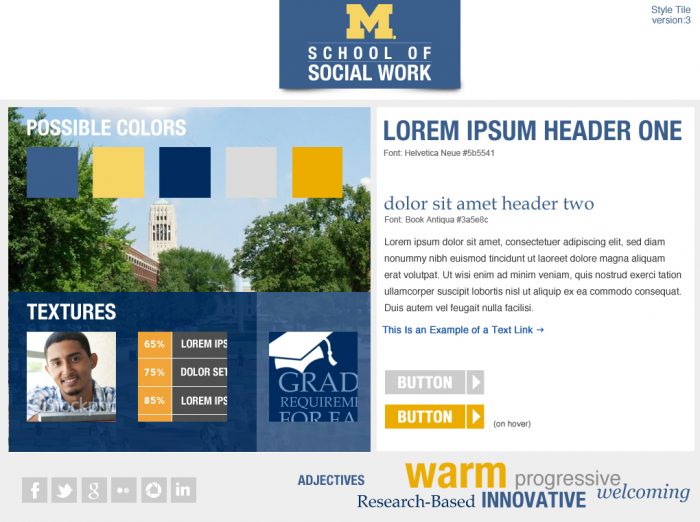
The “mood board” for the SSW website redesign captures the overall look and feel of the site.
When it comes to redesigning your website, you’ll need to do some specific preparation to assess the scope of work and required resources (both internal and external). Proper planning and expectation setting are the keys to a successful website redesign effort.
The more up-front planning and research you do to clearly define the project, the lower your risk for running into unrealistic timelines and costs. And making sure you get feedback early and often ensures that both the developers and decision-makers are all the same page in regard to what the final product will look like and when it will be complete.
The School of Social Work (SSW) spent a year planning and approximately a year developing their site. One of the key tactics they used was to create a small, focused group, to simplify the decision making process. This group—represented by SSW’s website audiences of students, faculty, and staff—determined website mission statement and primary audience.

Card sorting is a technique in user experience design in which a person tests a group of subject experts or users to generate a dendrogram (category tree) or folksonomy. It is a useful approach for designing information architecture, workflows, menu structure, or website navigation paths. (Boxcar Studio)
SSW also let content drive the redesign process. The project team surveyed SSW alumni, faculty, students, and staff on what was and wasn’t working for the current website. In addition, they met with SSW offices and units in 90-minute face-to-face info gathering sessions. By taking a content-driven approach, SSW increased:
- measurable functionality
- engagement with audience members
- key metrics, including applications
A content-driven website is a work in progress, more a process than a project. You will be faced with new and changing content on a daily basis. You should plan for your site to constantly be evolving based on new content. But sometimes you need to step back and go through the hard work of remaking large areas of the site—even most of it.
Like most large-scale efforts, the key to success is to strike the right balance between preparation and planning, and being ready and willing to adjust as you go along.
